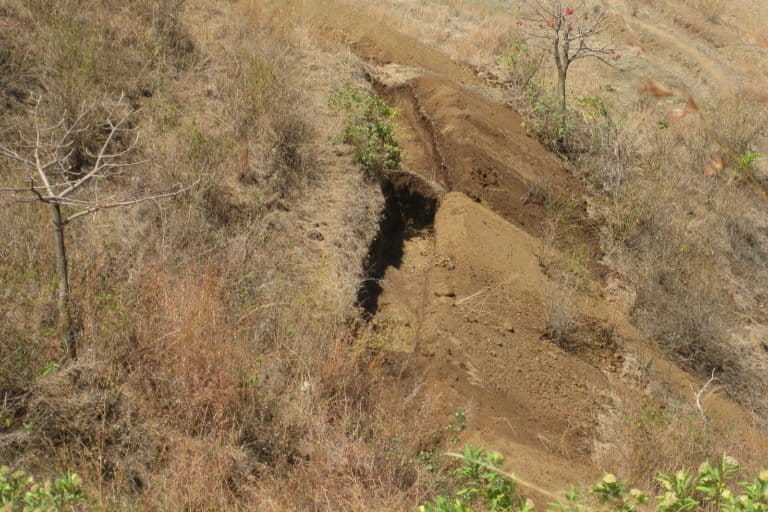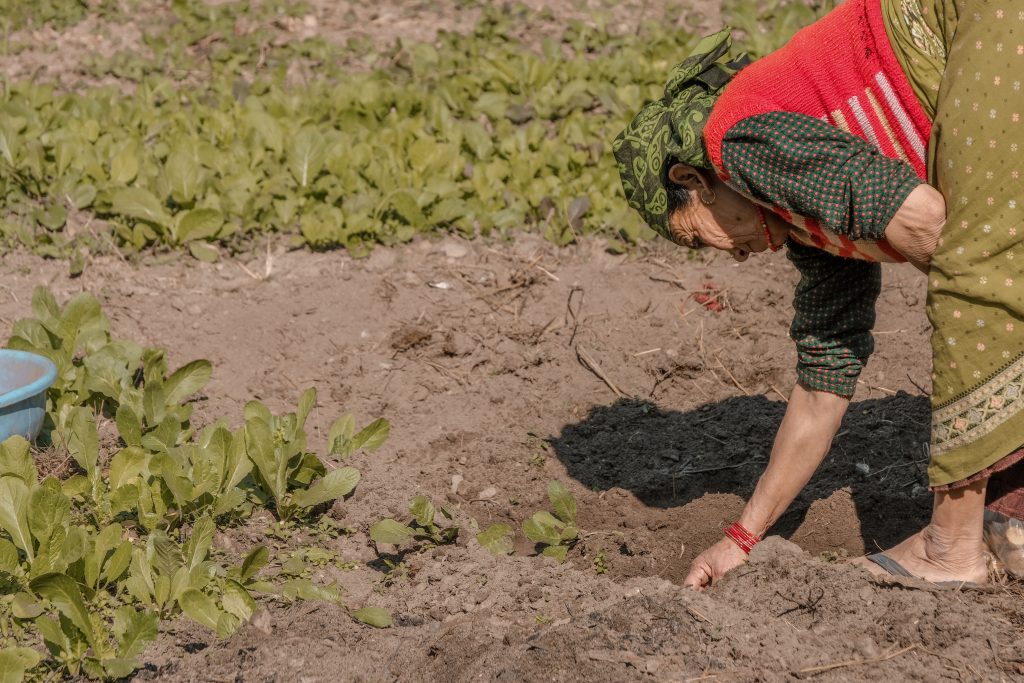- Soil degradation due to various factors in India was occurring on over 40% of India’s geographical area, according to a 2015 study.
- A lack of baseline data on soil carbon and soil biology is a hurdle while planning and implementing soil conservation.
- Another key issue is the impractical timeframe of the programmes. Success of soil conservation in India requires a holistic approach that accounts for the socio-ecological context of the ecosystem, write the authors of this commentary.
- The views in this commentary are that of the authors.
A movement to Save Soil in India is gaining traction not just in the media but also with political leaders, celebrities, and citizens alike who have proactively come forward in its support. Given that soil is crucial to our lives and livelihoods, such an awakening is definitely necessary.
Backed by the UN Decade of Ecosystem Restoration (2021-2030) and an increased global discourse on conserving and restoring ecosystems, especially soil, there’s an exceptional enabling environment that’s driving this momentum. However, soil conservation is neither a new idea nor is it a recent development intervention in India. Since the 1920s, at least 30 different programmes and schemes have been implemented by the government of India on soil conservation related interventions. Despite such programmes and an assortment of global movements, the progress on soil conservation in India has been inadequate and disparate. In 2015, it was reported that soil degradation due to water erosion, acidification, flooding, wind erosion, salinity, and a combination of other factors in India was occurring on over 40% of India’s geographical area.
A century of soil conservation efforts in India
The earliest initiatives on soil conservation recorded in India date back to pre-colonial times, when soil and moisture conservation programmes were initiated in the 1920s by the British Administration. Post-independence, India’s First Five Year Plan (1951) included soil conservation measures to combat soil erosion and degradation and improve the livelihoods of rural population. The proposed soil conservation measures were forward-looking with a multi-stakeholder approach by design and involved several departments as well as local village councils. This first soil conservation plan kept its momentum well into the 1980s; during this time, the Indian government also launched soil conservation initiatives in river valleys and flood-prone rivers.

The 1990s saw an overhaul of the previous soil conservation initiatives as the government launched the National Watershed Development Project for Rainfed Areas (NWDPRA). The project focussed on the construction of contour bunds, trenching, sowing, silvi-pasture development, and afforestation across India. While this programme was the ministry’s flagship programme on soil conservation over the years, a Planning Commission report in 2001 deemed the programme’s performance as unsatisfactory. Despite expenditure of over Rs. 4500 crores (Rs. 45 billion), between 1990-2013, on conservation-related interventions, the committee reported that reservoirs were silting at alarming rates, droughts were common, and production of key crops was fluctuating. By 2013, it was clear that the NWDPRA had not achieved its intended outcomes, and it was amalgamated into the National Mission for Sustainable Agriculture (NMSA) which works alongside the MGNREGA. Between 2016-2020, over Rs. 1500 crore (Rs. 15 billion) was allocated on soil health related schemes in India. However, nearly half of this outlay remained unspent.
Challenges to conserve soil
A lack of baseline data on soil carbon and soil biology is a hurdle while planning and implementing soil conservation. Another key issue is the impractical timeframe of the programmes. It takes about 10-15 years to regenerate and restore ecosystems, but programmes are designed without a long-term vision and short-term successes are expected. Moreover, such programmes do not involve local communities and institutions to keep the wheel spinning, and fail once external support is withdrawn. For instance, the Madhya Pradesh (MP) government’s Rajiv Gandhi Watershed Development Mission (RGWDM), which was one of India’s largest watershed development programmes, only sustained until the government’s facilitation continued. As the mission was withdrawn after the stipulated four years, the progress made on drought proofing was undone as it became challenging for the villagers to manage regenerating resources without government support. In Jhabua district, where the programme was implemented, 80% of the villagers migrated when the next drought occurred as the institutions had collapsed and drought proofing efforts were ineffective. Building capacity and investing in institutions and being demand-driven are key characteristics for such programmes to sustain.
The compelling case of open natural ecosystems in India
With so many cases of centralised implementation of soil and moisture conservation programmes it is worth exploring if these interventions are tailored to local socio-ecological contexts. Let’s look at the grassland ecosystems in India. Even though open natural ecosystems such as grasslands are often mislabelled as “wastelands” in India, they play a prominent role in sequestering carbon in the soil, hosting unique biodiversity, as well as creating livelihoods for pastoral communities. Grassland soils are high in soil organic carbon because of the dense fibrous, and extensive root systems of grasses, forming an ideal environment for soil microbial activity. The carbon stored by grassland soils is also less prone to destruction through fire and other anthropogenic risks.

Conventional wisdom points to deforestation causing soil degradation and soil conservation to foster afforestation. While this assumption is true in certain cases, it is not true for grassland ecosystems, where popular forest ecosystem interventions such as trenching can result in a temporary decline in soil carbon stocks due to reduced gross primary production and increased soil respiration. Ploughing and digging trenches disrupts the carbon cycle in three ways: losing soil moisture, carbon stock, and grass biomass. Trenching and ploughing is also a matter of concern for local agropastoralists. For instance, in Banni grasslands in Gujarat, India, the Maldhari communities expressed their fear about their buffaloes (of the coveted Banni breed) being prone to falling in the trenches and dying. In some cases, poorly planned deep continuous contour trenches that use heavy machinery can actually severely impact soil health, in addition to scarring the landscape

Way forward
Success of soil conservation in India requires a holistic approach that accounts for the socio-ecological context of the ecosystem. A blanket approach will not be suitable for the diverse ecosystems that exist in India, and should incorporate the following. First, it is necessary to design programmes with time frames that integrate short-term productivity concerns while also addressing long-term sustainability concerns so that programmes do not end when programme funding ends. This needs to be complemented with monitoring, reporting, and evaluation to ensure effective expenditure of funds and effort. Second, conservation techniques that build upon the knowledge of communities and adopt their experiences to manage production systems. This will require a shift from a supply-driven approach to a demand-centric approach. Only when people are at the heart of conservation will the interventions be sustainable and effective. And finally, policy communication about the importance of ecosystems such as grasslands that don’t yet find a place in popular imagination and policy measures must be context-specific and socio-ecologically suitable.
Read more: [Commentary] To address climate change, grow and restore soil, not trees
Soil conservation has the potential to improve food security, availability of fodder, as well as fibre and fuel production that directly improves livelihoods. In a country like India, where the climate crisis is multidimensional, and a predominantly rural population that derives their primary source of income from land and livestock-based activities, conserving, and restoring is crucial. However, to achieve success in ongoing conservation efforts, the government and civil society needs to put in prolonged efforts that acknowledge soil conservation to be a people-centric and social movement. Its benefits can then be reaped in the form of poverty alleviation, carbon sequestration, and other ecosystem services.
Anuja Malhotra is a Policy Analyst at the Center for Policy Design at ATREE and Abi Vanak is a Senior Fellow at the Centre for Biodiversity and Conservation at ATREE and an Honorary Professor at the University of KwaZulu-Natal, Durban.
Banner image: A farming activity in India. Photo by Shankar/PixaHive.
